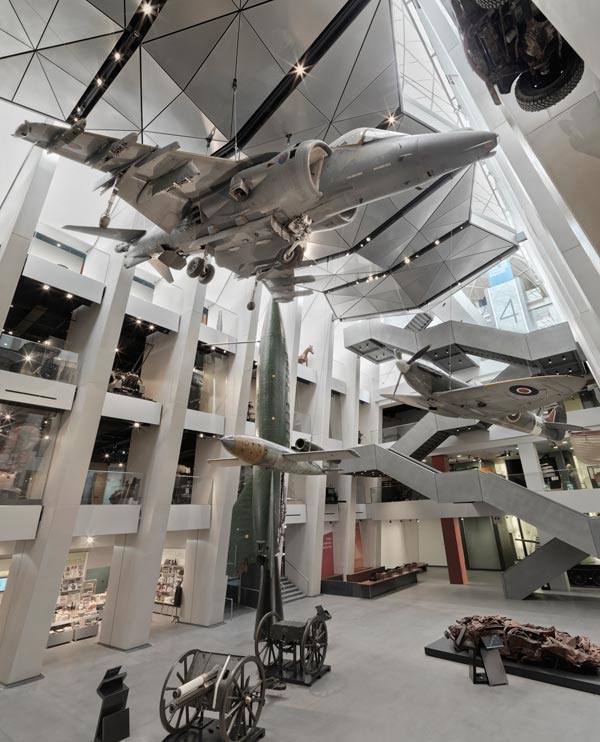The Imperial War Museum (properly the IWM London) is tucked away in a small park in Southwark, south London. It was for many years a rather dusty and neglected addition to London’s stable of museums and galleries. This has all changed, however, thanks to a recent £40 million revamp and the surge in public interest that has come with the 100th anniversary of the First World War.

The new Imperial War Museum is mightily impressive and, following its recent grand reopening, very popular. I arrived early but even within a few minutes of the museum’s doors opening, the entry way to the new First World War gallery was already busy. I decided to pause and admire the new atrium, marvelling at the Harrier GR9 suspended in mid-air alongside a Spitfire, before going upstairs. Multimedia displays on the ground floor recounted the service history of these aircraft, including the Harrier’s role in Afghanistan.
The museum is split over five levels and even a short visit demands a couple of hours. Level 1 is dedicated to the prelude to WWII and wartime life – both on the frontlines and at home. One of the first exhibits you see is the text of the 1938 Munich Agreement between Germany and Great Britain, promising that diplomatic, rather than military, means would be used to resolve any differences between the two countries – a thought provoking example of what might have been. But the nearby parachute mine and Morrison shelter restore historical reality.
Elsewhere on Level 2 are displays devoted to the ‘The Troubles’ in Northern Ireland and the Falklands War. Exhibits on the latter include some of the artist Linda Kitson’s works (she accompanied the task force) and the theme of war art is expanded further on Level 3 in the exhibition ‘Truth and Memory’. While the many photographs in the museum document aspects of war and civilian life, the paintings on display here offer their own interpretations of life at the front and invite a different form of contemplation of what it means to be at war.
Making your way to Level 4, The Holocaust Exhibition is a powerful study of the rise of Nazism and its barbaric treatment of those not conforming to its Aryan ideal. A visit to this exhibition alone would be time well spent, and the same can be said of the Victoria Cross exhibition in the Lord Ashcroft Gallery on level 5. Ashcroft has been a notable collector of the Victoria Cross (Britain’s highest decoration for bravery) for many years and the citations for each award in the gallery, from that for 16-year-old Battle of Jutland sailor ‘Jack’ Cornwell in WWI to that for Iraqi war veteran Johnson Beharry, make inspiring reading.
Getting the lift all the way back down to level 0, I squeezed my way into the First World War galleries. The exhibition uses a careful selection of artefacts from the war to illustrate the nature of the fighting and the effect that it had on the average soldier. Memorable exhibits include a wall covered with trench signposts, which vary from the whimsical (Picadilly Circus) to the chilling (Suicide Corner), and an officer’s leather glove shrunken and wrinkled by the caustic effects of Mustard Gas (an object that I can clearly remember from a school trip many years ago). Outside the First World War gallery is the much less harrowing café, where they have mercifully resisted the urge to serve wartime ration coffee.
Getting there
Address: Lambeth Rd, London SE1 6HZ
Opening hours: Daily 10–6 (closed 24–26 Dec.)
Admission: Free, with charges to some special exhibitions.
Nearest underground stations: Lambeth North, Elephant & Castle
Enjoy your visit: Arrive early. Take binoculars to study the suspended aircraft in close-up detail.
Other IWM sites: Churchill War Rooms; HMS Belfast; IWM Duxford; IWM North
Website: http://www.iwm.org.uk
